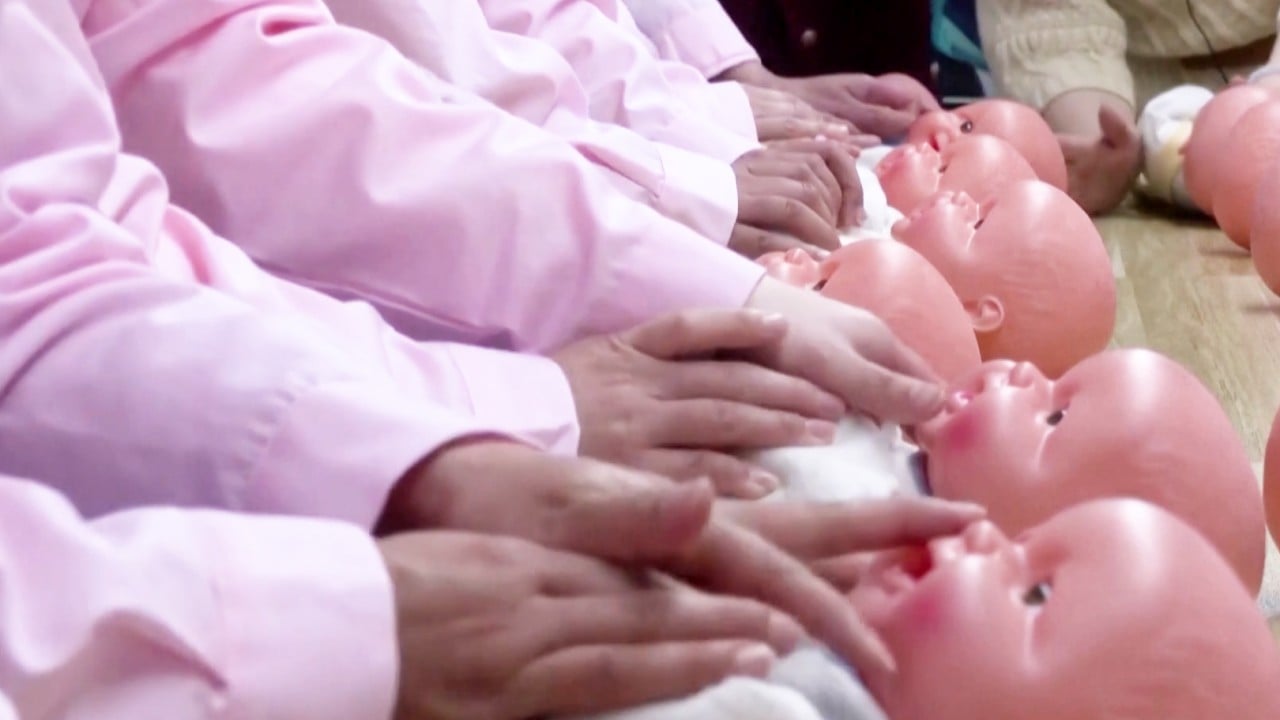After the fiasco of the selective two-child policy, the universal two-child policy and the three-child policy, China introduced new policies at the third plenum of the Communist Party’s 20th Central Committee to address population ageing and the country’s declining birth rate.
These policies include lowering the cost of childbirth, parenting and education, providing couples with children with childbirth subsidies, tax breaks, affordable childcare and possibly longer parental leave.
In fact, the Japanese government has already done what China’s government intends to do. Japan’s approach has proved expensive and inefficient, temporarily boosting the total fertility rate – the number of births expected in a woman’s reproductive lifetime – from 1.26 births per woman in 2005 to 1.45 in 2015 before it slid back down to 1.2 in 2023. China, which is getting old before it gets rich, does not have the financial resources to fully follow Japan’s path.
The decline in the fertility rate is inevitable, like a giant rock rolling down a hill. The one-child policy accelerated the process, and now the giant rock is at the foot of the hill. It will be very difficult to move it back uphill. China’s fertility rate was only about 1 birth per woman last year, less than half of the replacement level of 2.1. Shanghai’s fertility rate was 0.6, well below the 0.72 which has made South Korea the country with the world’s lowest fertility rate.
China’s efforts to boost its fertility rate face three major challenges: economic, physical and cultural. Economically, the one-child policy reshaped China’s socioeconomic landscape, dramatically increasing the cost of raising children.
For example, household disposable income as a share of GDP is 73 per cent in the United States and about 55 per cent in Japan but only 44 per cent in China, making it harder for ordinary Chinese families to raise a child. China’s housing market was valued at more than four times the country’s GDP in 2020, compared with almost 1.6 times in the US and 2.1 times in Japan.
The government stopped reporting official figures after the youth unemployment rate rose to 21.3 per cent in June 2023, and the rate under the government’s new method is still three to four times higher than Japan’s. Young people in China are struggling to find jobs to support themselves, let alone a spouse and children.
Physiologically, the age of marriage and childbearing is being delayed, infertility rates and the proportion of childless people are increasing, and the number of marriages and women of childbearing age are dwindling rapidly. For 95 per cent of women, only 12 per cent of their maximum ovarian reserve – a woman’s reproductive potential – is present by age 30. At 40 years old, only 3 per cent remains.
The age of first marriage for Chinese women has risen from 23 in 2000 to 28 in 2020 and is expected to continue rising. The infertility rate in China has increased from 1 to 2 per cent in the 1970s to 18 per cent in 2020.
China’s tertiary education enrolment rate has surpassed that of Japan. Under the Chinese government’s policies in pursuit of a talent dividend and “new quality productive forces”, young people’s attainment of college and postgraduate education will continue to increase. Given that higher levels of education are strongly negatively correlated with marriage and childbirth, this in turn will see further rises in the rate of unmarried people and delays in the age of childbearing.
The number of first marriages in China fell from 23.9 million in 2013 to 10.5 million in 2022, another trend that is likely to continue. Meanwhile, according to my own estimates, the number of women aged 20-34 fell from 149 million in 2012 to 119 million in 2023 and will further decline to 81 million in 2040.
Culturally, decades of the state’s family planning policy have undermined family values associated with traditional beliefs, making it socially acceptable and even desirable for couples to have one child or fewer. The more recent the cohort of Chinese women, the less willing to have children they seem to be. A 2022 survey found that while the average number of intended children among women in China was 1.64, the average fell to 1.54 for women born after 1990 and 1.48 for women born after 2000.
For comparison, in Japan and South Korea the average intended number of children is 2.01 and 1.68, respectively, but the actual fertility rate in 2023 was only 1.2 and 0.72. If this declining interest in having children is any indication, China will struggle to stabilise its fertility rate and is likely to see its population continue to shrink.
It is unlikely that the Chinese authorities will encourage childbearing as coercively as they enforced the one-child policy. Governments can reduce births by forcing people into sterilisation and abortion, but they cannot force them to marry or get treatment for infertility.
Encouraging childbearing requires increased government spending on parental subsidies, child welfare and education. It takes upwards of 20 years for a child to become a taxpayer.
Debt-ridden local governments will struggle to simply encourage childbirth, let alone force it. Some local governments might attempt to introduce mandatory measures to increase births, but these will only backfire and meet public resistance.
Low fertility and population ageing are global crises, and many countries urgently need to explore solutions. If China can achieve some success without violating people’s human rights, the international community should encourage it.
Yi Fuxian is a senior scientist at the University of Wisconsin-Madison and author of Big Country with an Empty Nest


